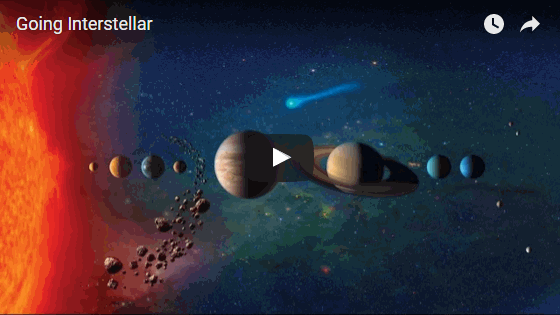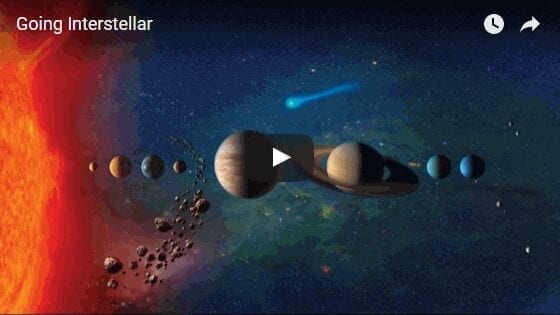
At about four light-years from the sun, Alpha Centauri is the closest star system to the solar system. While that may seem relatively close, it would still take humanity thousands of years to reach, based on current propulsion technology.
In fact, it took Voyager 1, which was launched in 1977, 37 years to reach the outskirts of the solar system. That spacecraft flew at 17 km/sec, less than 0.006% the speed of light.
“We have to radically rethink our strategy or give up our dreams of reaching the stars in a way romanticized in books and movies,” wrote Philip Lubin, of Univ. of California, Santa Barbara’s Physics Dept.
In his paper, “A Roadmap to Interstellar Flight,” and in a video from NASA 360, Lubin states that photonic propulsion, or the propulsion of objects through light particles, could help humanity achieve quick interstellar travel, turning science fiction into science fact.
Currently, NASA estimates that it would take humans roughly six months to travel to Mars. According to Lubin, his theoretical technology could propel a 100 kg robotic craft to Mars in a few days, and a shuttle-sized craft in about one month. The former robotic craft would travel around 1,200 km/sec.
Learn more: Laser Propulsion Could Help Humanity Reach the Stars
The Latest on: Interstellar travel
[google_news title=”” keyword=”interstellar travel” num_posts=”10″ blurb_length=”0″ show_thumb=”left”]
via Google News
The Latest on: Interstellar travel
- What Does Billionaires Dominating Space Travel Mean for the World?on April 27, 2024 at 2:00 pm
Billionaires' ventures into space travel raise questions about private companies' role in exploration, geopolitical power dynamics, and the future of space collaboration.
- Mapping the Milky Way's magnetic field in 3Don April 27, 2024 at 10:51 am
We are all very familiar with the concept of the Earth's magnetic field. It turns out that most objects in space have magnetic fields but it's quite tricky to measure them. Astronomers have developed ...
- Nasa engineers bring Voyager 1 back to life after interstellar glitchon April 27, 2024 at 5:00 am
After a sudden loss of contact in November, mission controllers were able to reestablish contact with the probe across 15bn miles of space ...
- High-speed rail an exciting return to big thinking on US infrastructureon April 27, 2024 at 2:06 am
It was a good week for anyone who dreams about the power of technology to transform our lives and society for the better, as well as to unlock the mysteries of the cosmos ...
- The search for extraterrestrial life: where are they?on April 26, 2024 at 5:45 pm
The following gallery outlines some of the existing theories that attempt to explain why we haven't yet established real contact with potential extraterrestrial life. Check it out!
- Famous Actors Who Played An Astronauton April 26, 2024 at 3:37 pm
We love to see people in space, even if things turn out badly for them. Here are 32 famous actors who've played astronauts.
- Voyager 1 interstellar spacecraft communication restored after months of silenceon April 26, 2024 at 1:40 am
After nearly five months of communication silence, Voyager 1 has resumed sending usable data back to NASA. The issue was traced back to a faulty chip in the Flight Data Subsystem (FDS) computer ...
- NASA's Fermi space telescope finds a strange supernova with missing gamma rayson April 25, 2024 at 9:00 am
"Fermi is the most sensitive gamma-ray telescope in orbit, so when it doesn’t detect an expected signal, scientists must explain the absence." ...
- ‘The announcement we’ve found alien life could be just a couple of years away’on April 25, 2024 at 4:31 am
Generally, when I’m on a plane, if I tell somebody that I search for life on planets around other stars, I don’t get to sleep,” says Lisa Kaltenegger, with a laugh. “It’s always a careful, curated ...
- NASA re-establishes communication with Voyager 1 interstellar spacecraft that went silent for monthson April 24, 2024 at 6:50 pm
NASA re-established communication with Voyager 1, an interstellar spacecraft that nearly five months ago began sending unreadable data back to the space agency.
via Bing News











